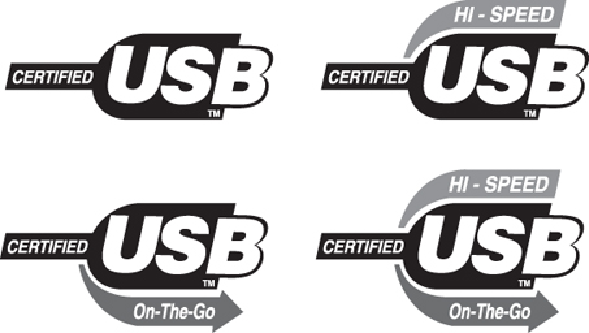Hardware Reference
In-Depth Information
Note the terminology, which can be confusing.
Full-Speed
designates the 1.5MBps
throughputofUSB1.1,whereas
Hi-Speed
designatesthe60MBpsthroughputofUSB2.0.
Because any USB 1.1 device works on a 2.0 bus (at the slower 1.1 speeds), many devices
or components have been advertised as “USB 2.0-Compatible” or “USB 3.0-Compatible”
when they do not actually support Hi-Speed or SuperSpeed operation. The key to finding
trueUSB2.0or3.0devicesistolookforthedevicetostatethatitisUSB2.0or3.0“com-
pliant” or “certified.”
Thesupportofhigher-speedUSBperipheralsrequiresusingaUSB2.0-or3.0-compliant
hub.YoucanstilluseolderUSB1.1or2.0hubsona2.0or3.0bus,butanyperipheralsor
additional hubsconnected downstream fromaslowerhuboperateattheslowermaximum
speed. The higher transmission speeds through a 2.0/3.0 hub are negotiated on a device-
by-device basis; if the higher speed is not supported by a peripheral, the link operates at a
lower speed.
How can you tell at a glance which devices are designed to support USB 1.1 versus the
faster USB 2.0and 3.0standards? The USB Implementer's Forum (USB-IF), which owns
andcontrolstheUSBstandard,introducedlogosinlate2000forproductsthathavepassed
its certification tests. These logos are shown in
Figure 14.5
.
Figure 14.5
The USB 1.1-compliant logos (left) compared to the USB Hi-Speed (2.0-compliant) logos
(right). The lower-left and -right logos indicate USB On-The-Go compliance.
As you can see from
Figure 14.5
, USB 1.1 is called simply “USB,” and USB 2.0 is called
“Hi-Speed USB.”

